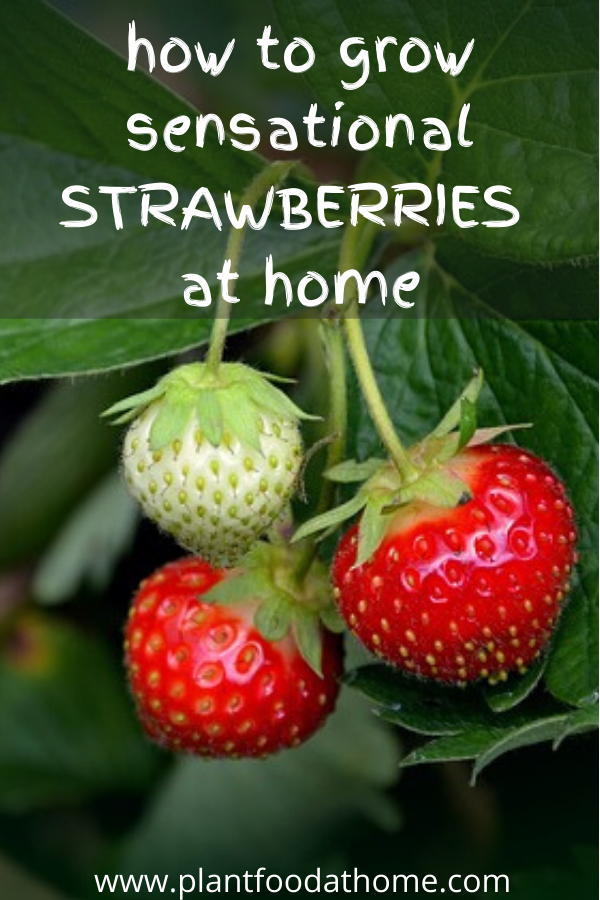Learn how to grow strawberries so that from spring all the way through to fall, you can be harvesting your very own homegrown strawberries. Turn abundant strawberry harvests into jam or pick them daily to top your breakfast cereal in the morning. Whether you dream of growing a few strawberry plants in pots on a sunny balcony or creating a garden patch overflowing with sensational strawberry plants, we show you how to grow strawberries in our ultimate growing guide.

Strawberry plants are so easy to grow, so they make a great option for first-time gardeners. And with such tasty rewards, children will also be excited to learn how to grow strawberry plants.
As a perennial, strawberry plants last for several seasons. They are most productive for 3 years once they start producing and last around 5 years. To get the most from your strawberry patch, it’s worthwhile replacing the strawberry plants every 4-5 years.
Table of Contents
- Varieties
- Ideal Growing Conditions for Strawberries
- Keeping Strawberry Plants Through Winter
- How To Grow Strawberries In Pots, Containers And Hanging Baskets
- Fertilizing and Feeding
- How Long Does it Take to Grow Strawberries?
- Harvesting And Storing
- Do Strawberries Ripen After Picking?
- Propagating Strawberry Plants
- Pests and Disease
- Conclusion
- Recommended Products
Varieties
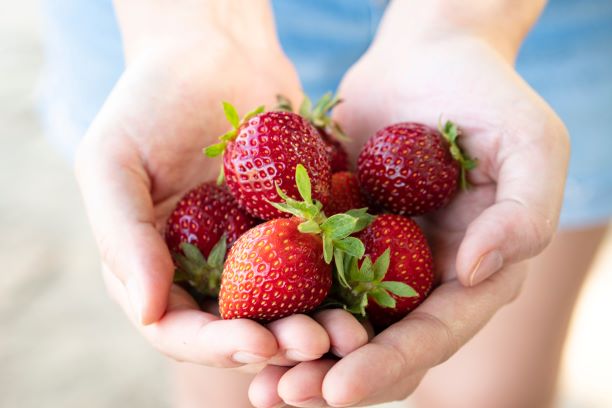
By choosing a number of different varieties of strawberry plants, you can harvest strawberries from spring through to the end of fall.
Strawberry plants are often categorized into 3 types. June-bearers, Everbearing and Day-Neutral.
June-bearers typically fruit over a 2-3 week period. Among June-bearers there are early, mid and late-season varieties.
Everbearing usually produce 2 crops, the first in spring and the second in late summer or early autumn.
Day-neutral can continue to fruit while temperatures are ideal at 35-85F (1.5-30C) though the fruit is smaller than other varieties.
Here are some popular varieties:
Honeoye – June-bearing day-neutral.
Earliglow – June-bearing, early ripening.
Allstar – June-bearing, late mid-season ripening.
Ozark Beauty – popular everbearing strawberry. Produces 2nd crop.
Tristar – day-neutral, produces early, through summer and into fall.
Ideal Growing Conditions for Strawberries
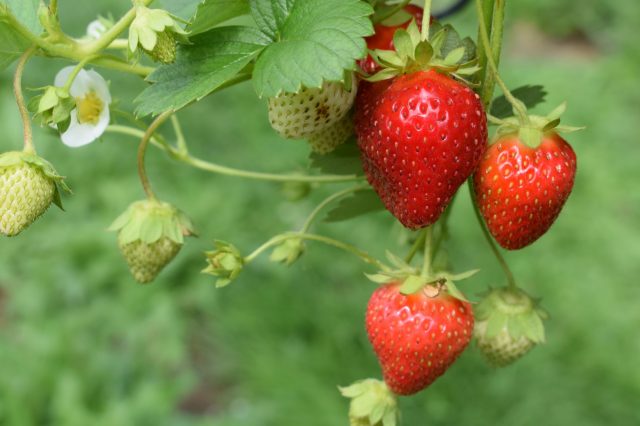
Soil: Strawberries prefer soil rich in organic matter that also drains well. Add compost and well-rotted manure and work them into the soil prior to planting. Soil pH of 5.5-7 is ideal. You can check the pH with a soil gauge here.
Sun: Plant strawberries in full sun, with 6-8 hours of sunshine a day. They will grow in partial shade though the harvest will be smaller.
Strawberries from seeds: Strawberries can be started from seeds, but more commonly they are purchased as starters or bare roots.
Strawberry seeds can be planted in spring, after any frost. However, strawberries grown from seed won’t fruit in the first season, so growing from seed will require patience.
Plants: Strawberry plants can be purchased as pots or sometimes as bare-rooted plants.
Plant strawberry plants in the spring after any danger of frost has passed. Or in warmer climates whenever plants are available in nurseries.
Climate: Strawberries grow in cool temperate to subtropical climates.
Plant: When you’re ready to plant out your strawberries, dig a hole large enough to accommodate the roots and plant up to the crown at the base of the plant where the leaves emerge. It’s important not to bury the crown which can otherwise cause the plant to rot.
Plant strawberry plants 12 inches (30cm) apart.
Mulch: Mulch well with organic mulch or straw to conserve moisture. Mulch is also important to keep the strawberry fruit clean and off the ground. As well, mulch suppresses weeds which will otherwise compete with the strawberry plant.
Without mulch, straw or a similar protective barrier, strawberries are more susceptible to dirt and rotting on the ground.
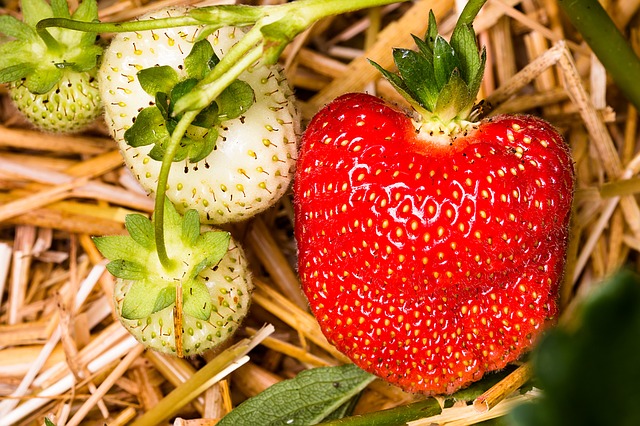
Water: Keep strawberry plants well-watered while they are establishing. Then continue to water regularly, especially while the plant is fruiting.
On average, 1-2 inches (25-50mm) of water a day during the warmer weather. You can monitor the water with a water gauge if you’re unsure.
Pollination: Strawberries are self-pollinating. Pollination occurs from wind, bees and other insects transferring the pollen around the strawberry flower.
Keeping Strawberry Plants Through Winter
Strawberries are fairly cold-tolerant plants but in cold climates that freeze or temperatures dip below 20F (-6C), you can help protect plants by winterizing them.
Firstly choose a variety that does well in cold climates. Check the plant has become dormant by checking there is no new leaf growth.
Then use a thick 4-5 inch (10-12.5cm) layer of mulch to cover the plant. Choose straw or pine needles over hay or lawn clippings which may produce weeds, become matted and too heavy for the plant underneath.
Remove the mulch from on top of the plants in spring and use it to mulch around the strawberry plants instead.
How To Grow Strawberries In Pots, Containers And Hanging Baskets
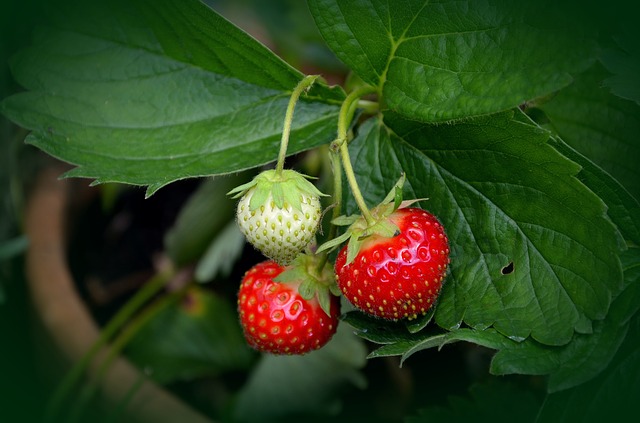
Strawberries grown in pots, containers and hanging baskets do very well.
For growing strawberries in pots, containers or hanging baskets, choose a quality organic potting mix, mulch well and water regularly as they can dry out more quickly than garden-grown plants.
Growing strawberries in containers away from the ground mean less snail and slug problems.
This 5-tier strawberry pot allows you to grow 20 strawberry plants in limited space.
Fertilizing and Feeding
When flowers appear, it’s time to feed your strawberry plants.
Choose an organic fertilizer, chicken manure pellets or top-dress with homemade compost.
Apply fertilizer fortnightly during flowering and fruiting, or as per the labels instructions for application and frequency.
How Long Does it Take to Grow Strawberries?
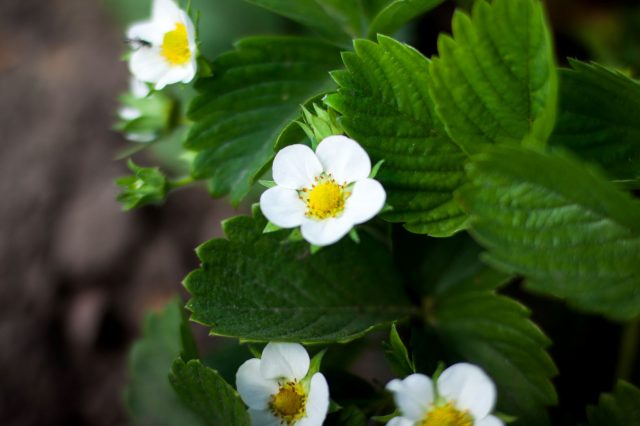
From flowering to harvest, strawberries take 4-6 weeks.
Depending on the strawberry plant variety, your climate and the time of fruiting, from planting to the first harvest takes 3 months.
Harvesting And Storing
To harvest strawberries, simply cut them off the plant at the stem just above the fruit.
From green fruit, to white and finally red, it’s easy to see when strawberries are ripe. (Unless you are growing white alpine varieties, in which case usually the pips or outer seed color will change to indicate ripeness.)
Strawberries can be stored unwashed in the fridge for up to 5 days but are tastiest eaten at room temperature. So bring them out of the fridge a few hours before you intend to eat them for the best flavor.
Strawberries can also be frozen. Wash them, pat them dry with a paper towel and lay them on a baking tray lined with baking paper. Place in the freezer and once frozen, strawberries can be transferred to freezer bags and stored for 2 months.
Do Strawberries Ripen After Picking?
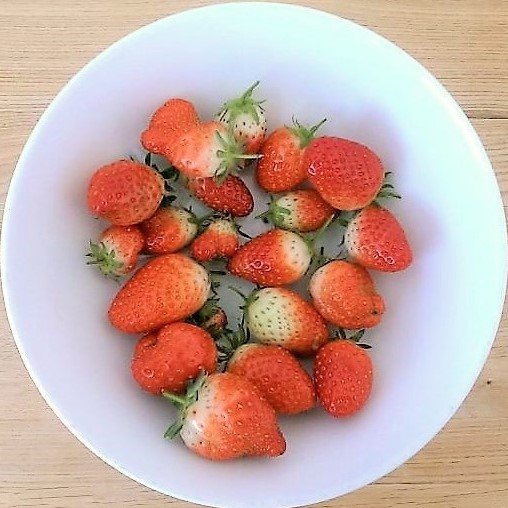
Some fruits will continue to ripen after they are picked. They include fruits such as peaches, bananas and blueberries, among others. However, strawberries are not one of them and do not ripen after picking.
However, they can continue to change color once harvested. If left on the kitchen bench for a day or two, their color will develop further, though, this is not a ripening process.
Of course, it is preferable to leave the strawberry on the plant to ripen by the sun, but if pests such as lizards and birds are also inline for your ripe fruit, harvesting them on the early side may be a good option.
Remember, the strawberry must be mature with color change already underway.
I use this method all the time because there are lots of other creatures in the garden when you choose to garden organically. In particular, the lizards in my garden love strawberries. And I’m happy to share with them because they do an amazing job of keeping slugs and snails out of my garden!
Propagating Strawberry Plants
Strawberry plants naturally produce runners. These are brand new plants and one of two ways strawberry plants reproduce. The other is through seed on the outside of the fruit.
In the first year, it’s best to remove the runners from the original plant to encourage the mother plant to put all its energy into growing big and healthy. (You can re-plant the runner in a pot or elsewhere in the garden). In later years you can allow the runners to remain on the original plant to produce new strawberry plants.
However, it’s important to note that once the strawberry plant starts producing runners for the season it will stop fruiting. The fruiting season can be extended by not allowing the plant to produce runners. You do this by cutting them off as soon as they form.
Pests and Disease
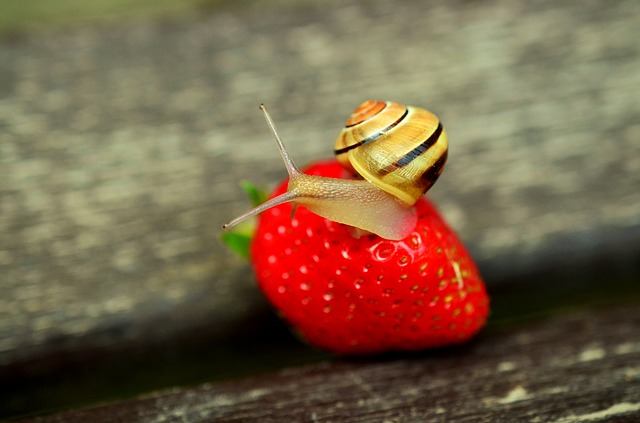
Disease can be reduced by purchasing your strawberry plants from your local nursery or reputable seller with certified virus-free plants.
A large portion of diseases affecting strawberry plants is caused by various fungus’s. But many diseases can be reduced or eliminated with good soil health and drainage.
There are also a few pests that think strawberries are just as delicious as we do.
Birds – If birds are a problem you can cover the strawberries with row covers, exclusion bags or bird netting. Bird netting will still allow bees access to the flowers.
Slugs and Snails – There are a few natural methods to try and keep slugs and snails away from your strawberries. Controls include organic baits, traps and manual removal.
Ants – Ants can find their way into strawberries after slugs have made holes. Solve the slug problem to reduce and eliminate the ant problem.
Japanese Beetle – Horticultural neem oil or try a solution of 4 tablespoons of dish liquid and water in a spray bottle and spray directly on the beetle.
Lizards – Lizards are amazing pest controllers of snails and slugs, so if you garden organically you may want to encourage lizards in your garden and plant a few extra strawberry plants to share.
Related: Strawberry Plant Flowers But No Fruit: Causes And Solutions
Conclusion
Strawberries are easy and rewarding to grow. And by growing a selection of different varieties of strawberry plants, you can be harvesting delicious berries for months on end. So why not select a few plants and start growing your own strawberries at home?
Recommended Products
- Strawberry 5-Tier Planter Pot – Grow strawberries in limited spaces with this pot.
- Organic Potting Mix – for planting strawberry plants in pots, containers and hanging baskets.
- Organic Fertilizer – start fertilizing when flowers first appear.
- Chicken Manure Pellets – start fertilizing when flowers first appear.
- Horticulture Neem Oil – control Japanese Beetle with neem oil.
- Soil and Water Gauge – monitor soil pH and moisture with this gauge.
- Row Covers – Protect strawberries from pests.
- Exclusion Bags – Protect strawberries from pests, simply tie the fruit within the bag.
- Bird Netting – Protect strawberries from birds with bird netting.
Further reading:
- What’s Eating My Strawberries? Answered!
- Growing Feijoa Pineapple Guava Trees and Eating Feijoa Fruit
- How to Grow Cape Gooseberry
- How To Easily Grow Blueberries At Home
- Pepino Melon: How To Grow The Plant And Eat The Fruit
- Lychee Fruit: What is a Lychee and How to Eat One
- Why Is My Raspberry Plant Dying? Causes and Solutions
- Does Rhubarb Die After Flowering? Answered!
